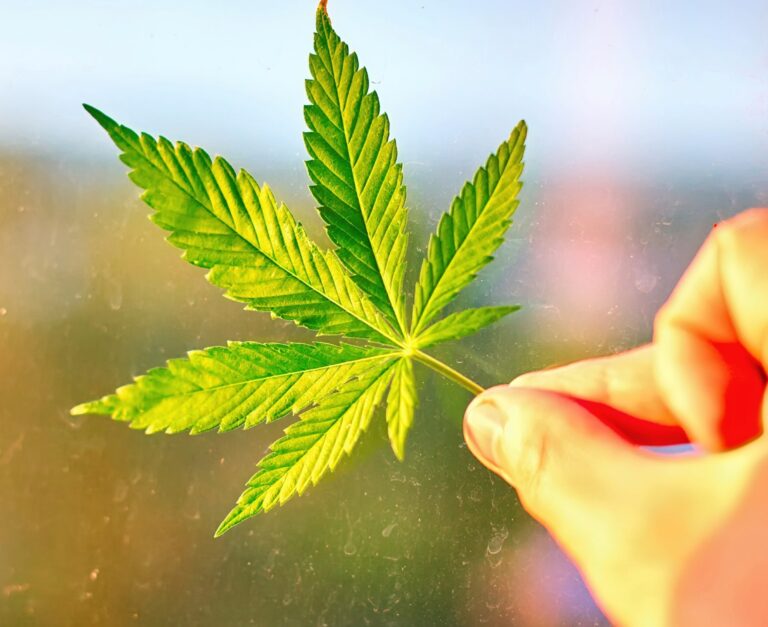Hemp has emerged as a powerful ally in the global fight against insecticide resistance, and new research has revealed that cannabidiol (CBD), the same compound used to treat a variety of diseases, can effectively kill mosquito larvae.
A study published in the journal Insects has shown that hemp leaf extracts rich in the active ingredient CBD can kill mosquito larvae in just 48 hours.
Surprisingly, this lethal effect was observed in both strains of yellow fever mosquitoes, including one that is known to be resistant to conventional insecticides.
Targeting mosquito larvae
Eric Martinez Rodriguez, the study's lead author and an entomology graduate student at Ohio State University, stressed the urgency of targeting mosquitoes at the larval stage.
“It's very important to be able to eliminate these pests at an early stage when they are most vulnerable,” Martinez Rodriguez said.
Adult mosquitoes, known for traveling long distances and transmitting disease, are not the only challenge.
Mosquito larvae are aquatic creatures that typically live in still water and are difficult to control, and overuse of synthetic insecticides, essential to combating them, has led to resistance and harm to the environment.
Hemp vs. Cannabis: What's the Difference?
Although hemp and marijuana both belong to the same plant family, Cannabis sativa, there are some key differences in their chemical composition and legal status.
Hemp is a type of cannabis sativa that has a very low THC content (the compound that gets you high) – the law requires it to be less than 0.3% THC – which means it's not addictive and is legal to grow in many places.
Marijuana, on the other hand, usually refers to varieties with high levels of THC and is often used for medical or recreational purposes.
Now let's talk about CBD, or cannabidiol. This compound is found in both hemp and marijuana, but unlike THC, CBD won't get you high.
Due to its low THC levels, it is often extracted from hemp and used in a variety of products, from oils and tinctures to edibles and creams.
People are turning to CBD for its potential health benefits, including pain relief, anxiety reduction, and anti-inflammatory effects.
The main thing to remember is that CBD is just one part of the hemp or cannabis plant, whereas the words “hemp” and “cannabis” refer to the entire plant, which may contain both CBD and THC.
Hemp as a sustainable pesticide
Inspired by earlier research from Ohio State University that found a Madagascan plant had natural mosquito repellent properties, the research team shifted their focus to a sustainable alternative: hemp.
Hemp is related to marijuana but does not have the high-inducing THC levels and is widely used due to its therapeutic CBD properties.
To test hemp's insecticidal efficacy, the team crushed dried hemp leaves and soaked them in methanol to create an extract.
“What surprised us was how little CBD was needed to be so lethal,” Martínez-Rodriguez said, noting that CBD circumvented the caterpillars' metabolic resistance to other insecticides.
A new era of natural insecticides
This finding not only highlights hemp as a cost-effective crop for pesticide production, but also raises questions about its impacts on non-target species.
Peter Piermarini, a professor of entomology at Ohio State University and co-author of the study, noted that CBD appears to be a safe compound for humans and pets to ingest.
“It will be interesting to learn more about how CBD interacts with different proteins in mammals and insects to understand why it is safe for humans but not for insects,” Professor Piermarini said.
Although more research is needed to ensure the safety of CBD for pollinators like honeybees, this research paves the way for a new era of natural insecticides.
Hemp and the environment
While the scientific community explores the potential applications of hemp-derived CBD as an insecticide, ecological concerns related to its widespread use must also be addressed.
While the benefits of reducing reliance on synthetic pesticides are clear, it’s important to understand how CBD-infused solutions interact with ecosystems, particularly the aquatic habitats where mosquito larvae live.
Comprehensive studies should investigate unanticipated effects on non-target aquatic species and contribute to maintaining biodiversity.
Additionally, best practices and guidelines are developed in collaboration with environmental scientists to ensure the benefits of this natural pesticide are maximized without compromising the ecological balance.
Future research directions
The promising results of initial studies have paved the way for numerous research studies to scientifically explore the insecticidal properties of CBD.
One such extension would include evaluating the effectiveness of CBD against other resistant mosquito species and pests to understand its broader spectrum of action.
Additionally, there is the potential to tweak extraction methods to optimize CBD concentrations for effective, sustainable pest control.
Future research may explore genetic engineering approaches to enhance hemp’s insecticidal properties.
Hemp Extracts and Pest Management
While this study highlights the effectiveness of hemp as a natural insecticide against mosquito larvae, the potential uses of CBD in pest management could be much more far-reaching.
Researchers are investigating how hemp extracts can be used to control other pests that threaten agriculture and public health.
This will broaden the options for biopesticides and provide environmentally friendly solutions to combat insecticide-resistant pests in different ecosystems.
Developing safe pest control methods
The researchers are also keen to explore the broader environmental impact of CBD-based pesticides, particularly how they might affect biodiversity.
“Understanding how these natural compounds interact with different insect species will be crucial in developing safe and targeted pest control methods,” said Martínez Rodríguez.
Additionally, efforts are underway to optimize the extraction process to ensure maximum efficiency and minimal environmental footprint.
The research was supported by the Infectious Disease Institute and the Ohio State University College of Food, Agricultural and Environmental Sciences.
The study is published in the journal Insects.
—–
Like this article? Subscribe to our newsletter for more fascinating articles, exclusive content and updates.
Check it out with EarthSnap, a free app brought to you by Eric Ralls and Earth.com.
—–

